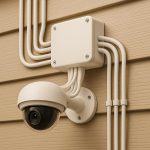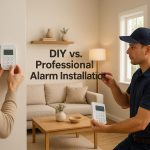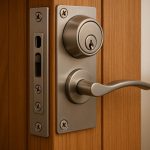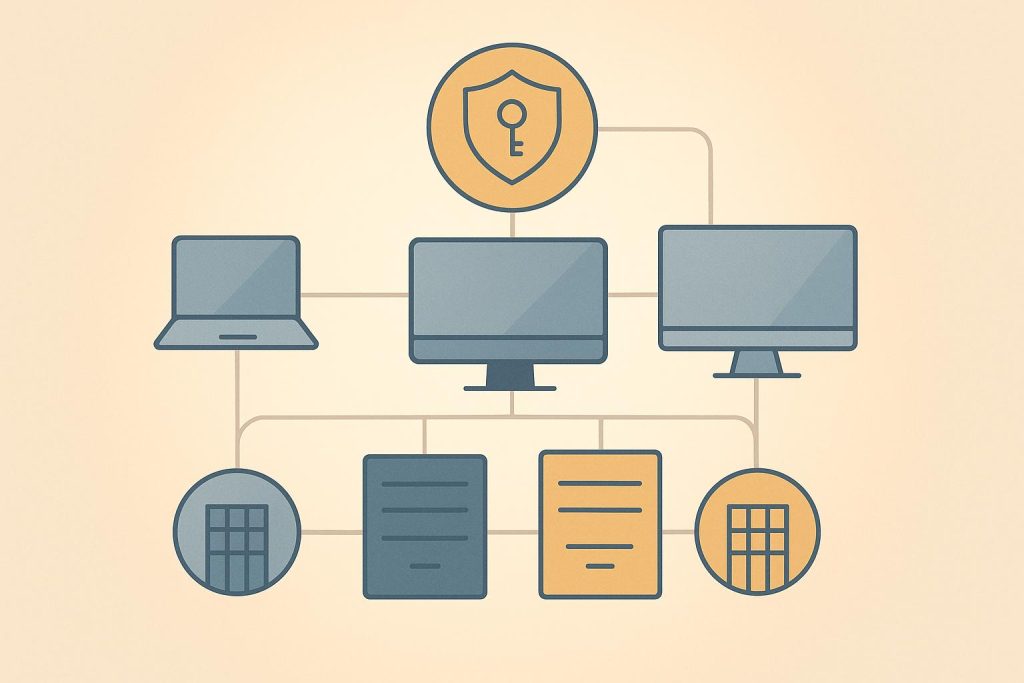Remote access control systems are reshaping how businesses in the U.S. manage security. These systems allow users to monitor and control entry points remotely, offering features like real-time updates, audit trails, and flexible access management. However, costs can vary widely, influenced by factors like system size, chosen technology, installation complexity, and maintenance needs.
Here’s a quick breakdown of key cost drivers:
- System Size: Costs range from $500 to $8,000 per door, depending on the number of access points and system scale.
- Technology Choices: Basic keycard systems cost $1,500–$3,500 per door, while advanced options like biometrics can exceed $10,000 per door.
- Installation Complexity: Labor costs range from $500 to $2,500 per door, depending on building infrastructure and integration needs.
- Maintenance: Cloud-based systems charge $3.50–$15 per door/month, while on-premises systems require annual contracts costing $500–$1,500.
Local providers like Sherlock’s Locksmith offer personalized services with competitive pricing, while standard national providers excel in scalability and advanced features. Choosing the right option depends on your business size, security needs, and budget priorities.
Avoid These Mistakes: Top 10 Access Control Tips for Businesses
1. Sherlock’s Locksmith
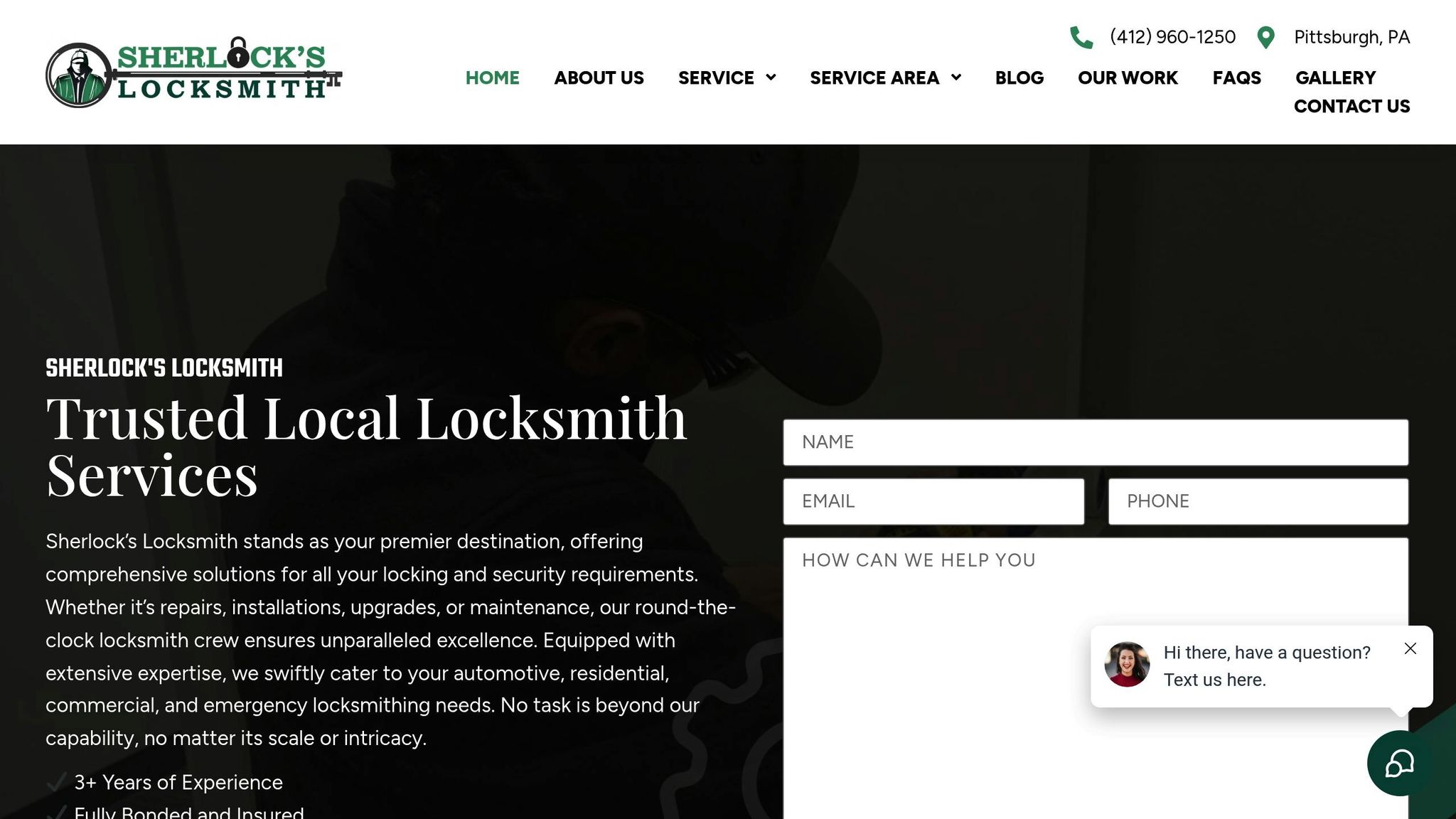
Sherlock’s Locksmith specializes in remote access control installations throughout Pittsburgh, PA. Their certified technicians focus on keeping costs manageable while ensuring proper setup. With 24/7 mobile service and advanced tools, they minimize unexpected expenses and deliver reliable installations.
System Size
The largest factor influencing the cost of a remote access control system is the number of doors or entry points. Each additional door typically costs between $1,500 and $4,500, covering hardware, installation, and software. Sherlock’s Locksmith designs systems that can scale with your business, making it easier to adapt as your needs grow.
For larger projects involving 10 or more doors, volume discounts can make installations more affordable on a per-door basis. Cloud-based systems offer an added edge by allowing businesses to expand effortlessly – adding doors, users, or features without major hardware updates. In contrast, on-premises systems often require extra equipment as you grow. These scalable setups also unlock advanced security options to enhance overall protection.
Features and Technology
Beyond the size of the system, the technology you choose also plays a big role in determining costs. Sherlock’s Locksmith offers a variety of access control technologies to fit different budgets. Basic keycard or fob systems range from $1,500 to $3,500 per door, while cutting-edge options like mobile access or biometric readers can cost between $2,000 and $10,000+ per door.
Their offerings include electronic locks, keyless entry systems, biometric locks, alarm systems, telephone entry systems, and access control programming using proximity cards and key fobs. With expertise in the latest security innovations, their technicians ensure these features are implemented effectively.
High-end systems like biometrics and mobile access come with upfront costs of $3,500 to $10,000+ per door, but they offer added benefits such as enhanced security, no need for physical credentials, and detailed audit trails. Additional features like cloud management and real-time monitoring increase costs but provide greater security and convenience. Integration with systems like surveillance cameras, fire alarms, or HR software typically costs an extra $500 to $2,000 per system, streamlining security management and potentially lowering long-term expenses.
Installation Complexity
The complexity of installation depends on factors like building infrastructure, wiring, and compatibility with existing systems. Sherlock’s Locksmith’s certified technicians conduct thorough site assessments to provide accurate cost estimates and minimize disruptions during installation.
Being based in Pittsburgh, the company has deep knowledge of local building codes and security regulations, which can influence both the complexity and cost of installations. Labor costs vary depending on the challenges involved, such as the number of access points, custom integrations, or heightened security requirements.
Ongoing Maintenance Costs
Maintenance is another key component of overall costs. Ongoing expenses include software updates, hardware servicing, and replacing credentials. Cloud-based systems usually charge $3.50–$15 per door per month, while on-premises systems often require annual contracts costing $500 to $1,500.
Sherlock’s Locksmith offers tailored maintenance plans to keep systems running smoothly and aligned with security standards. Their 24/7 emergency service and mobile support are especially useful for businesses that need quick responses to access issues or lockouts.
Replacing credentials like key cards or fobs is relatively inexpensive, costing $5–$50 each. Regular maintenance and updates not only prevent security gaps but also help reduce long-term expenses. To make budgeting easier, Sherlock’s Locksmith provides flexible payment options, including financing, leasing, and bundled service agreements, allowing businesses to manage both upfront and ongoing costs with confidence.
2. Standard Remote Access Control Providers
Standard providers generally follow similar pricing models, though the way they design and implement systems can differ. Below, we break down the key cost factors based on system size, features, installation, and maintenance.
System Size
The cost of a standard access control system largely depends on the number of access points needed. Prices typically range from $500 to $8,000 per door, influenced by the complexity of the hardware and installation. This wide range reflects the variety of security levels and technologies available.
For larger setups, like university campuses managing multiple buildings, costs can fall between $5,000 and $50,000 for centralized systems. Smaller businesses, on the other hand, might pay $2,000 to $4,000 per door for simpler configurations. Volume discounts often apply when you exceed 10–20 access points, lowering the per-door price.
Here’s a quick breakdown of hardware costs:
- Electronic locks: $50–$900
- Card readers/scanners: $80–$1,200
- Door controllers: $180–$3,500
Labor for installation adds another $500 to $2,500 per door, depending on the project’s complexity.
Features and Technology
The type of credential system you choose significantly impacts costs. Key fob and card-based systems are the most budget-friendly, with prices ranging from $1,500 to $3,500 per door. Mobile access systems, which eliminate the need for physical credentials, cost a bit more at $2,000 to $4,500 per door.
Biometric systems, often used in high-security environments like data centers and hospitals, are the most expensive, starting at $3,500 and going beyond $10,000 per door. Hybrid systems, which support multiple credential types, fall somewhere in the middle at $2,500 to $6,000 per door.
| System Type | Cost per Door | Best For |
|---|---|---|
| Key fob/card | $1,500–$3,500 | Offices, commercial buildings |
| Mobile access | $2,000–$4,500 | Coworking spaces, gyms |
| Biometric | $3,500–$10,000+ | High-security facilities |
| Hybrid/flexible | $2,500–$6,000 | Businesses needing flexibility |
Installation Complexity
Installation costs depend on the infrastructure of your building. If your doors are already compatible with the system, you could save up to 40% on installation. However, if electrical upgrades are required, expect additional costs ranging from $500 to $2,000 per door.
Before providing a quote, most standard providers conduct a site assessment to identify potential challenges. Factors like existing wiring, network infrastructure, and door compatibility all play a role. If integration with other security systems is needed, it can add $500 to $2,000 per integration to the total cost.
Ongoing Maintenance Costs
Standard systems typically fall into two categories: cloud-based and on-premises. Cloud-based systems charge $3.50 to $15 per door per month and include remote management capabilities. On-premises systems, while requiring a higher upfront investment, come with annual maintenance contracts averaging $500 to $1,500.
Software licensing is another cost to consider. For cloud-based systems, licensing is usually bundled into the monthly fee. On-premises systems, however, often require an upfront software purchase of $1,000 to $3,000, along with annual maintenance fees.
sbb-itb-643e28e
Pros and Cons
Using the cost breakdowns above as a foundation, let’s dive into the trade-offs when deciding between local providers like Sherlock’s Locksmith and larger national providers for remote access control systems.
Sherlock’s Locksmith delivers a highly personalized experience tailored to Pittsburgh businesses. Their 24/7 emergency service ensures quick assistance during system failures, and their certified technicians bring specialized tools and local know-how to handle even the trickiest installations – like those in older buildings with unique challenges.
This local expertise, however, comes with some limitations. While Sherlock’s Locksmith excels in flexibility and responsiveness, they may not match the scalability or advanced technology offerings of national providers. For businesses eyeing multi-site rollouts or cutting-edge features like biometric integrations or enterprise-level analytics, their product range might feel limited. Additionally, while their pricing is competitive for local projects, they don’t typically offer the bulk discounts that come with national contracts.
Standard providers, on the other hand, shine when it comes to technology and scalability. They often offer robust cloud-based platforms, seamless integration with HR systems and surveillance networks, and standardized maintenance contracts, making costs predictable. For businesses managing multiple locations, their centralized management tools and consistent service levels are major advantages.
However, there are trade-offs. Standard providers can falter in terms of responsiveness and flexibility. Emergency service calls might take longer to resolve, especially for on-site issues, and their standardized solutions may struggle to address unique local building codes or custom security needs as effectively as a local specialist.
| Criteria | Sherlock’s Locksmith | Standard Providers |
|---|---|---|
| Response Time | 24/7 rapid local support | Variable, often slower |
| Customization | High flexibility for unique needs | Standardized packages |
| Scalability | Limited to regional projects | Excellent for multi-site deployments |
| Technology Options | Moderate, proven solutions | Extensive, cutting-edge features |
| Pricing Flexibility | Competitive for local installs | Volume discounts, predictable contracts |
| Integration Complexity | Handles existing systems well | Advanced enterprise integrations |
| Maintenance Support | Personal, on-site service | Remote diagnostics, scheduled contracts |
These key differences can guide your decision. For example, local providers like Sherlock’s Locksmith often work well for businesses with fewer than 10 access points, offering tailored support and cost-effective solutions. On the flip side, standard providers are better suited for organizations needing enterprise-level features, multi-site management, or advanced integrations.
Ultimately, the choice boils down to your priorities: Do you value immediate, personalized service and local expertise, or do you need advanced technology and scalability for larger, more complex operations?
Conclusion
When planning your remote access control budget, it’s essential to evaluate the total costs over time. For cloud-based systems, you’re looking at approximately $3,000–$6,000 per door over five years. On-premises solutions, on the other hand, typically range from $4,000–$8,000 per door during the same period. Keep in mind, the initial installation cost is just the beginning – subscription fees, maintenance, and upgrades will add to the overall expense.
The number of access points is often the biggest cost factor. You’ll also need to account for hidden expenses, like replacing credentials or upgrading outdated equipment. If you’re installing multiple access points, you might qualify for discounts, especially if your existing doors are compatible with modern hardware.
For many U.S. businesses, cloud-based, mobile-enabled systems strike a good balance between cost, convenience, and scalability. These systems require a lower upfront investment, allow for easy remote management, and can grow alongside your organization. However, if your business demands strict data control or involves managing a complex facility, an on-premises system might be a better long-term solution. By understanding these cost factors, you can align your security investment with your organization’s specific needs.
Providers like Sherlock’s Locksmith highlight the importance of tailored services, offering personalized support and fast emergency responses to ensure your security requirements are met effectively.
When choosing a system, consider your unique needs and future growth. Opt for scalable solutions that can expand as your business evolves. Look for systems with strong integration capabilities to simplify your security management. Always request detailed quotes that include installation, hardware, software, and ongoing maintenance costs. Taking this comprehensive approach will help you assess the true total cost of ownership rather than focusing solely on upfront prices. Tailored services, such as those offered by Sherlock’s Locksmith, can also help you manage both visible and hidden security expenses effectively.
FAQs
What factors should businesses consider to find a cost-effective remote access control system?
The price of remote access control systems can vary based on a few key factors: the size of the system, the features included, and how complex the installation process is. For instance, a larger system equipped with advanced features like multi-location access or biometric authentication will likely cost more. However, these features can enhance both security and convenience.
To make a smart investment, start by evaluating your specific needs. Think about the number of users, the level of security you require, and any special installation considerations. If you’re in Pittsburgh, PA, Sherlock’s Locksmith specializes in security system installations and can help you find a solution tailored to your business needs.
What are the benefits of choosing a cloud-based remote access control system instead of an on-premises solution?
A cloud-based remote access control system brings several benefits when compared to an on-premises setup. One major advantage is the flexibility it offers. With cloud-based access, you can manage permissions from anywhere as long as you have an internet connection. This makes it especially useful for businesses operating across multiple locations or supporting remote teams.
Another key benefit is the lower upfront cost. Since cloud systems don’t rely on extensive hardware installations or ongoing maintenance, you avoid hefty initial investments. Instead, you typically pay a subscription fee, which helps keep expenses predictable and easier to manage.
On top of that, these systems frequently come with automatic updates. This ensures your security features stay up-to-date without requiring manual effort, saving you time and reducing potential vulnerabilities. In short, a cloud-based solution offers convenience, adaptability, and a cost-effective approach to modern access control.
How do biometric and mobile access technologies affect the long-term costs and benefits of remote access control systems?
The type of technology you choose – whether biometric or mobile access – can greatly influence the overall costs and advantages of a remote access control system.
Biometric systems, such as fingerprint or facial recognition, typically come with higher upfront costs because of the sophisticated hardware involved. However, they provide a higher level of security and help minimize the risks associated with lost or stolen credentials. Over time, this can translate into fewer security incidents and reduced maintenance expenses.
In contrast, mobile access systems rely on smartphones or other devices and often have lower initial hardware costs. However, they may require ongoing investments in software licenses or app updates. These systems are known for their convenience and adaptability, offering seamless integration with existing setups and enabling remote management.
Ultimately, the right choice depends on your specific requirements, budget, and long-term priorities for balancing security and efficiency.





